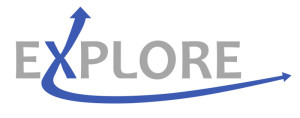 EXPLORE project aims at promote the use of knowledge in developing advanced products and services to address manufacturing industries’ challenges and needs. EXPLORE means Extended Exploitation of European Research Projects’ Knowledge and Results. The project will promote and support the industrial exploitation of R&D results, mainly by gathering resources to disseminate them (identifying new opportunities for demonstrators and pilot lines) and prepare commercial exploitation. EXPLORE will apply cross-fertilisation, stimulate training and education, and promote standardisation.
EXPLORE project aims at promote the use of knowledge in developing advanced products and services to address manufacturing industries’ challenges and needs. EXPLORE means Extended Exploitation of European Research Projects’ Knowledge and Results. The project will promote and support the industrial exploitation of R&D results, mainly by gathering resources to disseminate them (identifying new opportunities for demonstrators and pilot lines) and prepare commercial exploitation. EXPLORE will apply cross-fertilisation, stimulate training and education, and promote standardisation.
The European manufacturing industry’s long term competitiveness and sustainability strongly depends on its capability to innovate and address new consumer needs and societal challenges. This calls for significant public and private investments in research and development (R&D), but also for a growing capability to transform the knowledge gained in research activities into new products, processes, services and business models. Many of these challenges are multi-sectorial, so are the technologies needed to address them. The European Commission has supported the development of such horizontal technologies through its R&D programmes, creating over time a very rich knowledge portfolio. However, its exploitation and impact could be enlarged by reinforcing the wide dissemination of information and promoting cross-fertilisation with other sectors.
Luis Carneiro of INESC Porto, the EXPLORE coordinator, explained the main objectives of the project: “EXPLORE, a project funded by the 7th Framework Programme, seeks to unleash the full potential of the knowledge accumulated in through EU-funded projects in the domain of production technologies. We want to make sure that the knowledge acquired and technologies developed are further used in fostering advanced products and services to address manufacturing industries’ challenges and needs. Therefore, EXPLORE is promoting and supporting the exploitation of R&D results, namely through their wide dissemination, the organisation of matchmaking events, the provision of support to the negotiation of exploitation agreements and the preparation of a roadmap for implementing medium-to–large size demonstrators and pilot lines. Other activities include the identification of standardization opportunities and the definition of proposals and action plans for education and training.”
The project consortium gathers 14 partners representing industry, research, academia and business communities. Besides, the project has established a Strategic and Advisory Group including more than 40 regional authorities, industrial organisations and companies who have expressed interest in the project and are playing an active role. Thanks to this common effort the project gathered until now a first set of 50 R&D results with different technology readiness levels which have the potential to be applied in various industrial sectors and across numerous innovation domains.
The detailed information about these R&D results is accessible via the EXPLORE’s Innovation and Exploitation Platform that has been launched in October this year. Moreover, in the first months of the project, we were able to characterize not only the manufacturing and innovation profiles in 17 European regions, with the support of the corresponding authorities, but also the innovation needs of 11 different industrial sectors thanks to the information provided by their respective European Technological Platforms or associations. “The Platform is accessible through the EXPLORE project website (www.explore-fp7.eu). It comprises both of a frontend and back office. In the frontend it is possible to view detailed information about the R&D results and the involved organizations. After registering and signing in, it is possible to contact the owners of the R&D results, as well as to declare interest on the exploitation of each of those R&D results. The back office allows the registered users to manage their own information, including the creation and description of R&D results and to follow up the interaction with other users.” he added.
It will soon be possible to view information about the industrial sectors, regions, innovation domains, funding instruments and programmes, as well as training materials.



